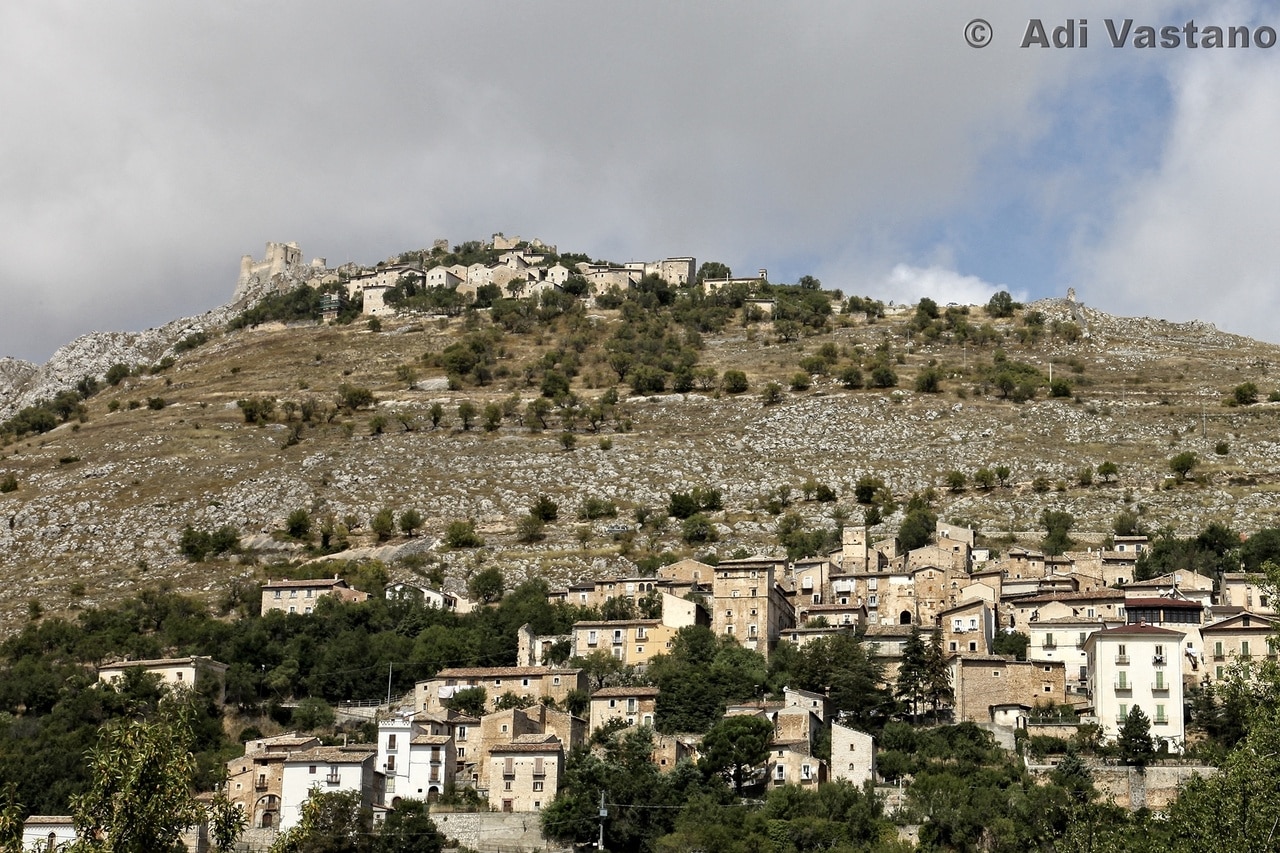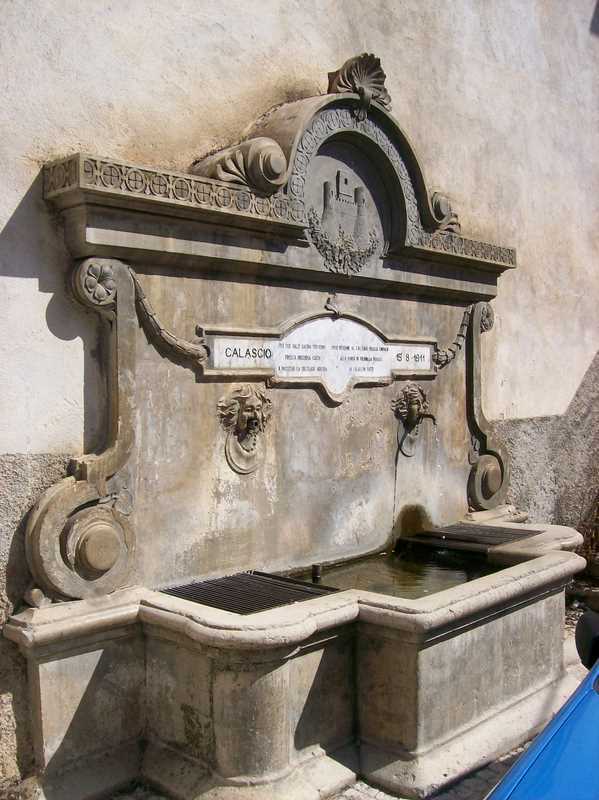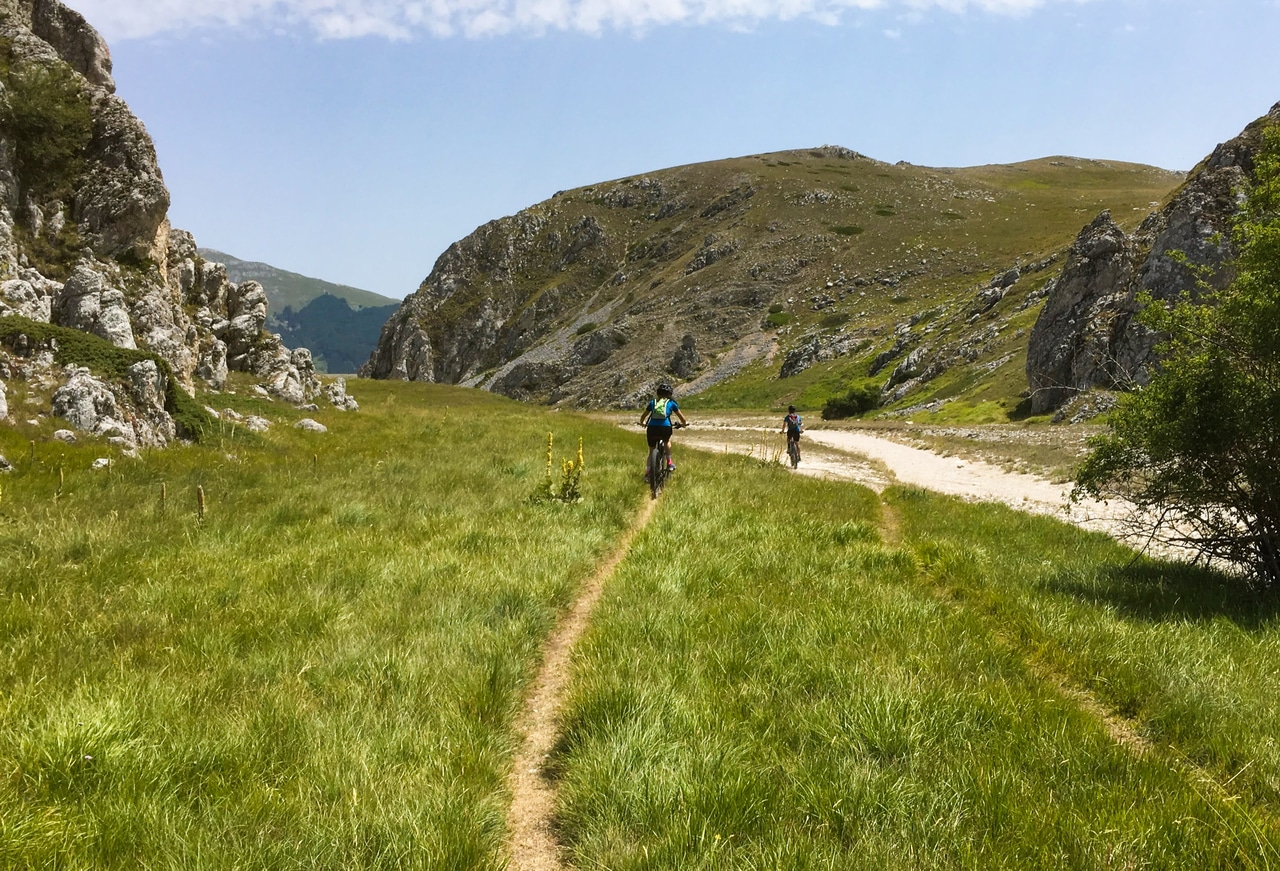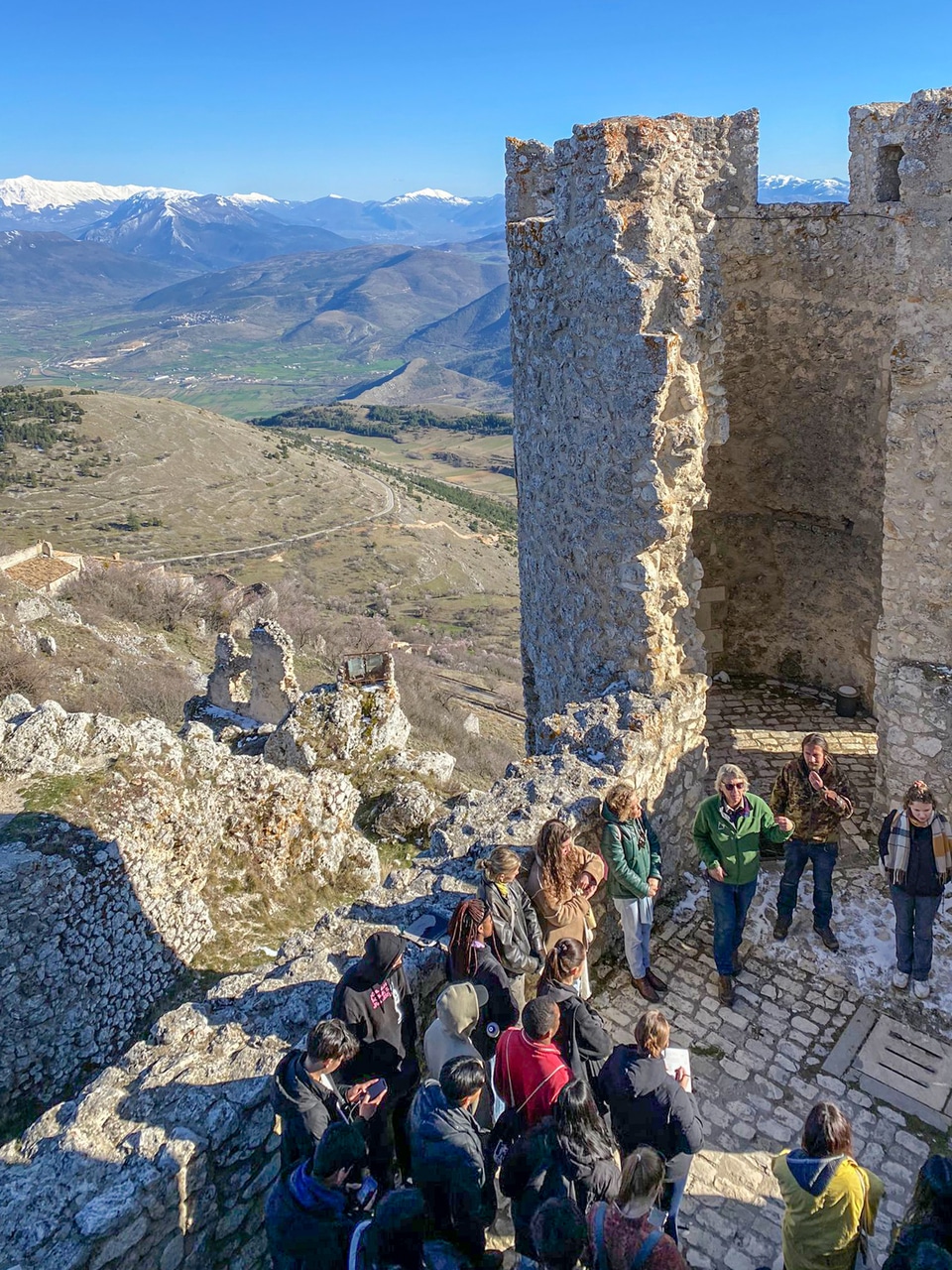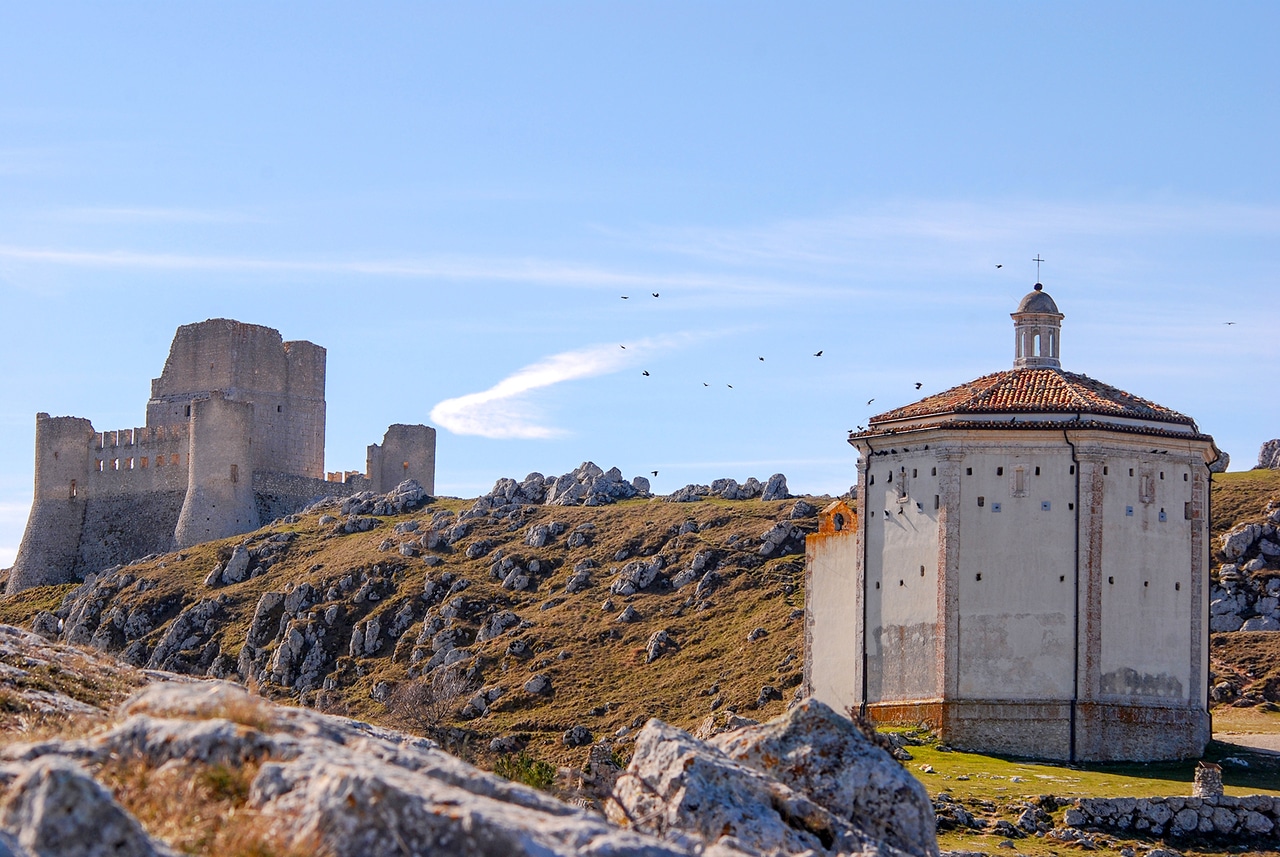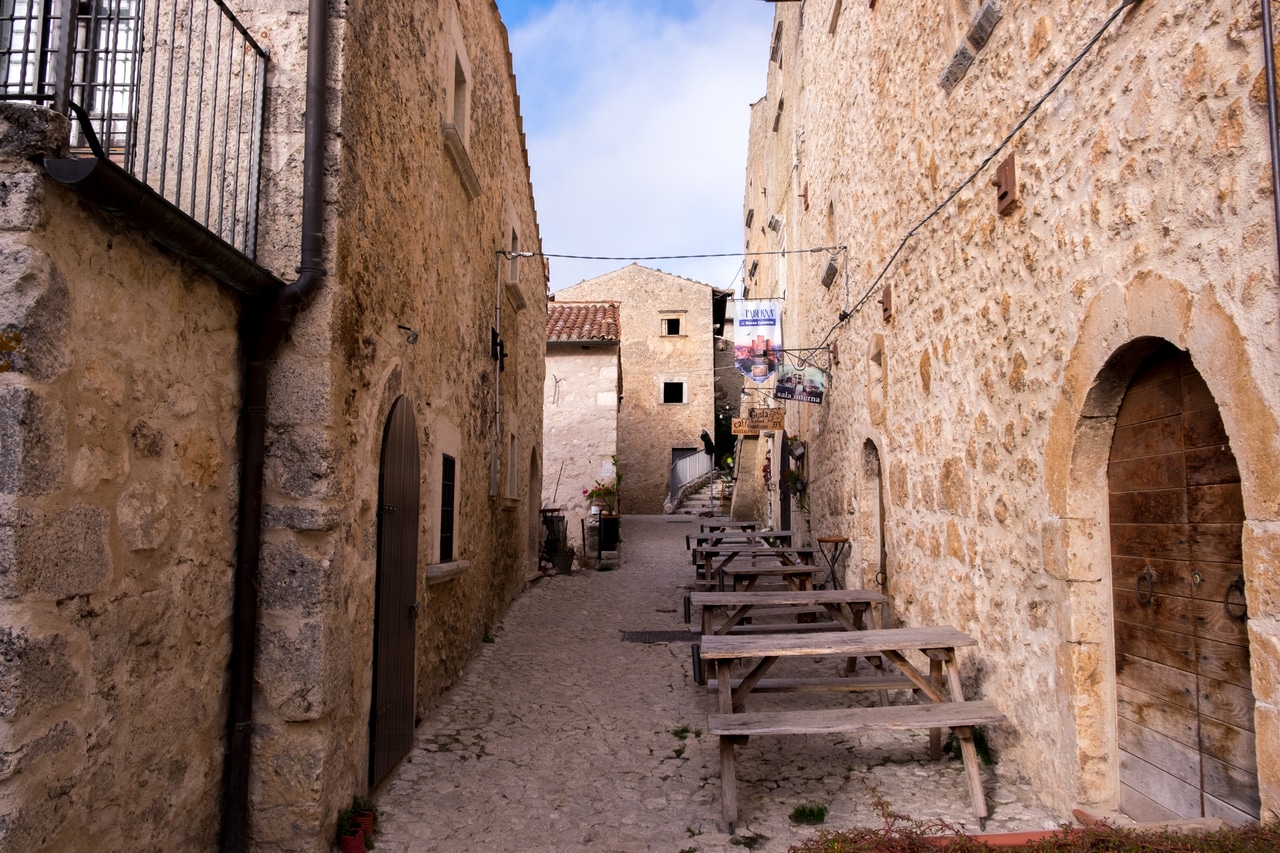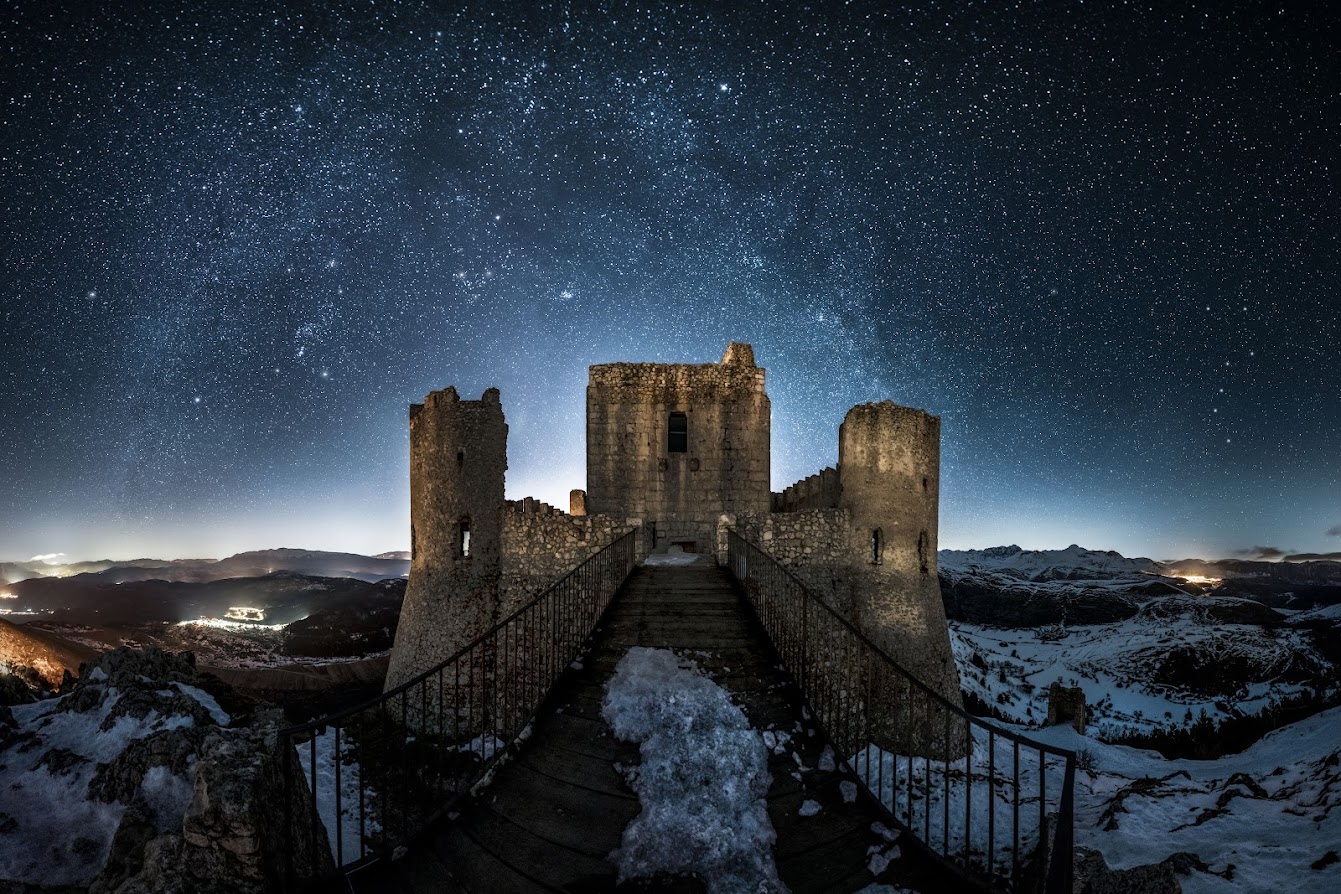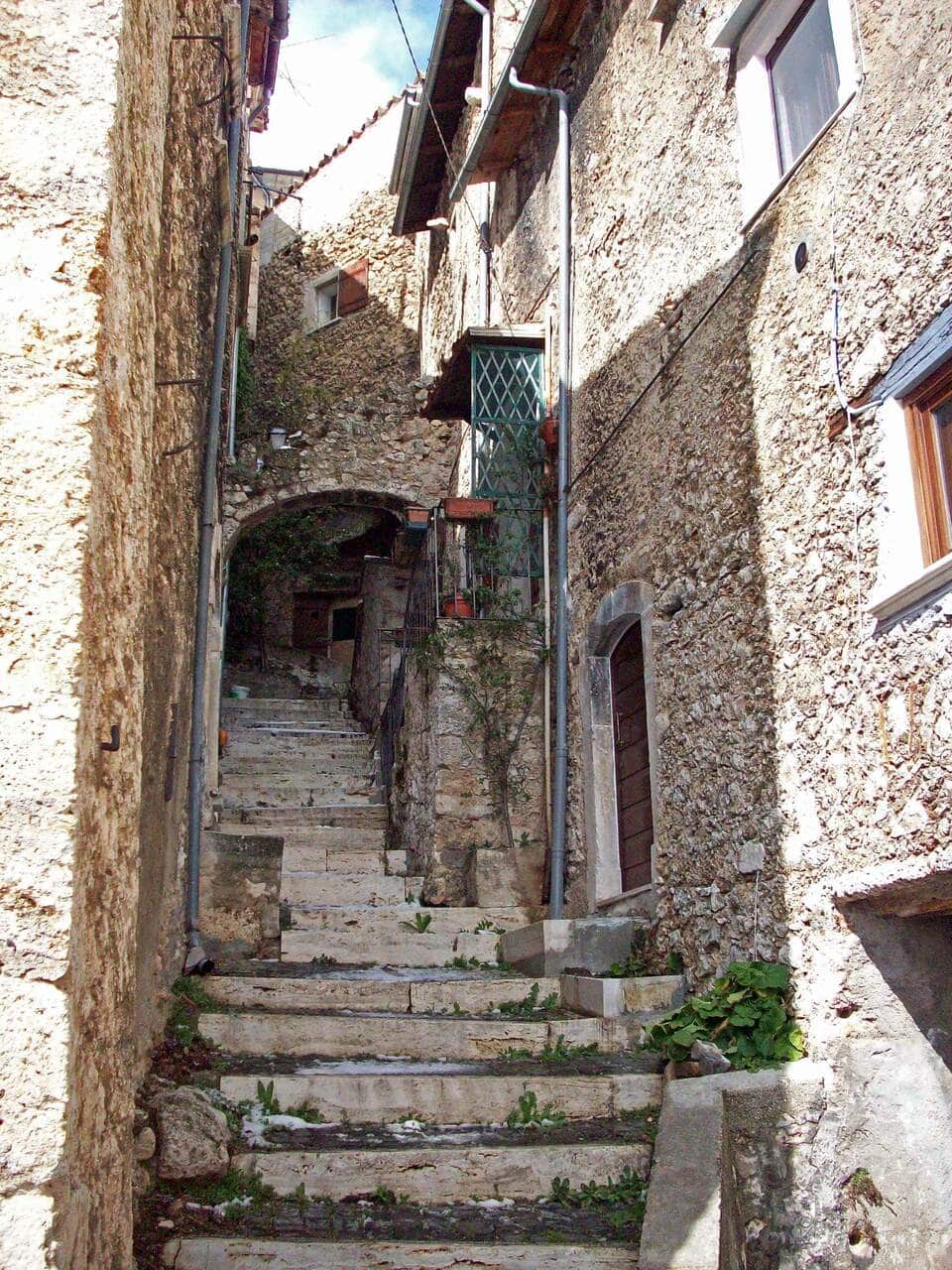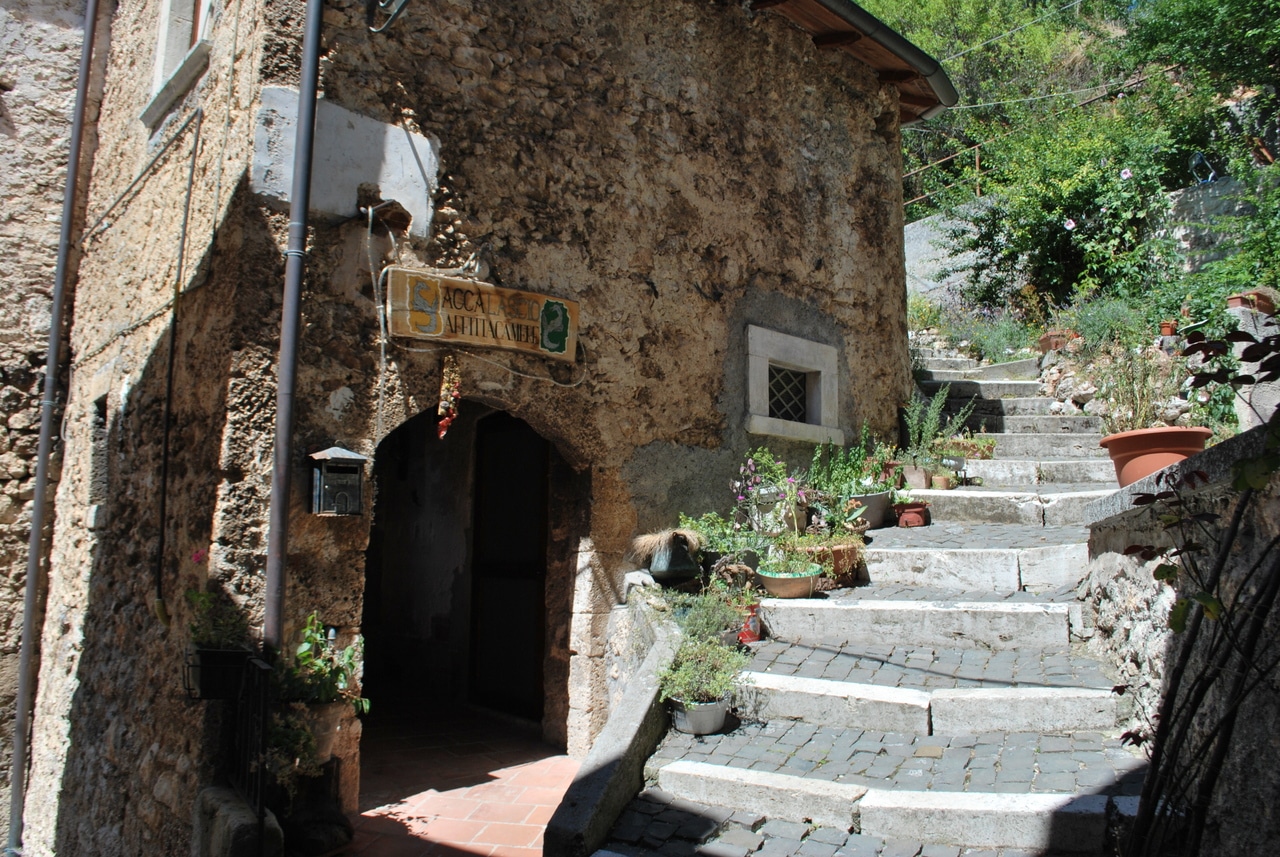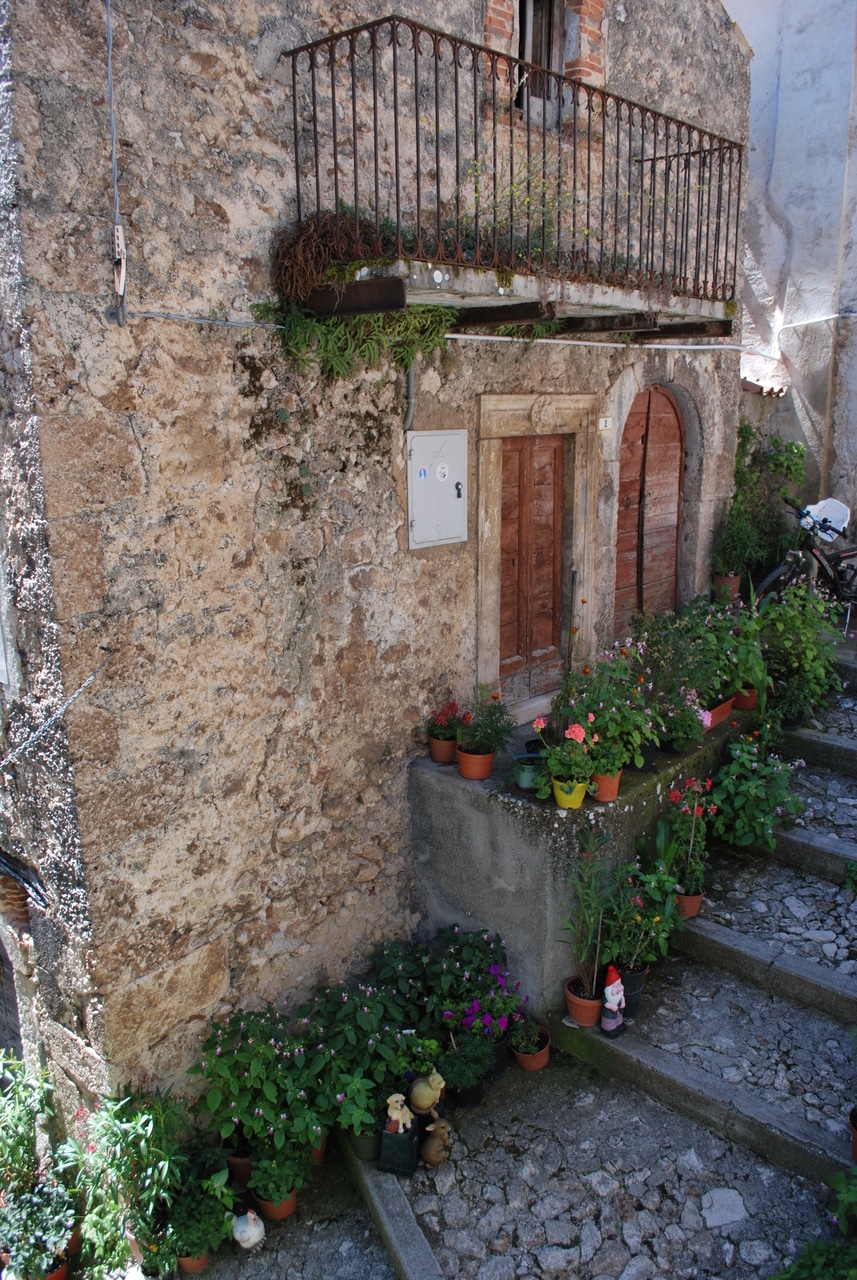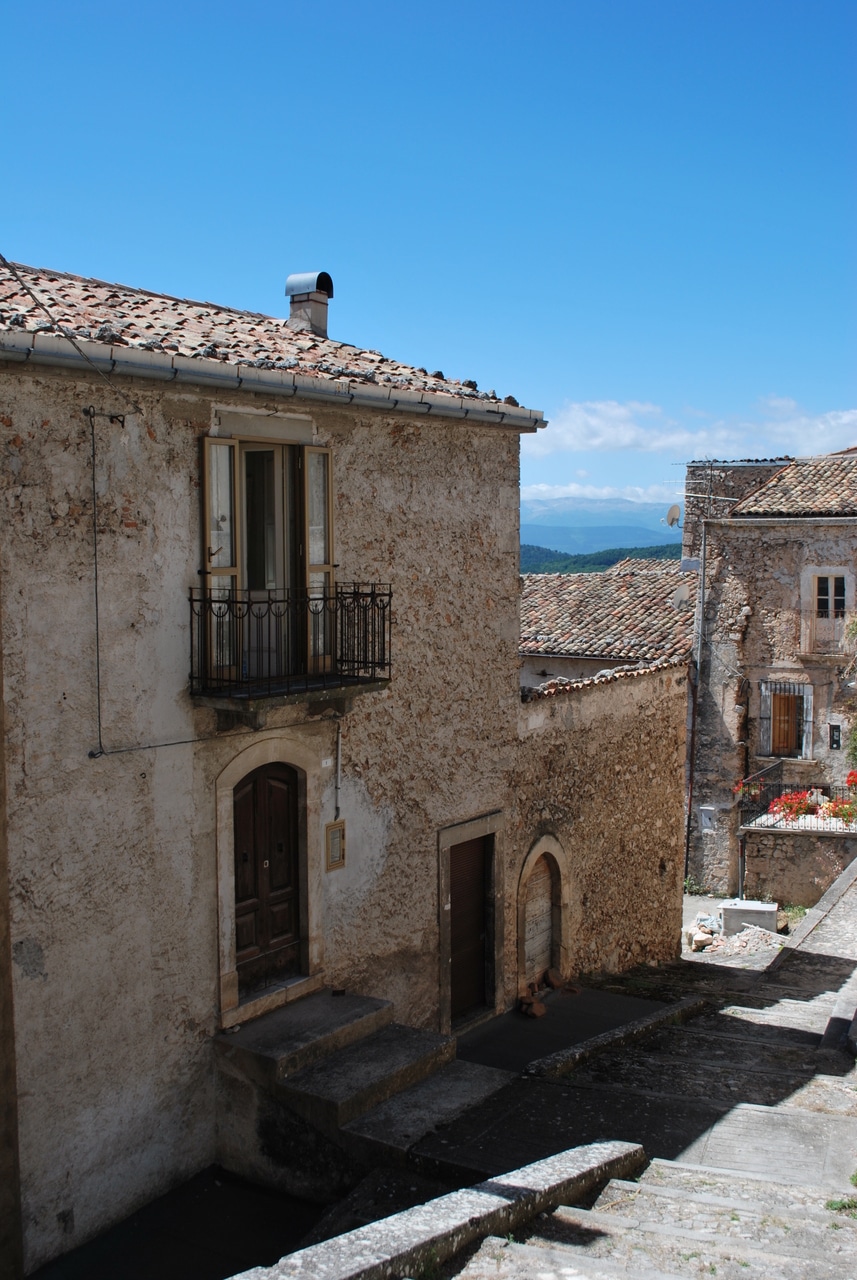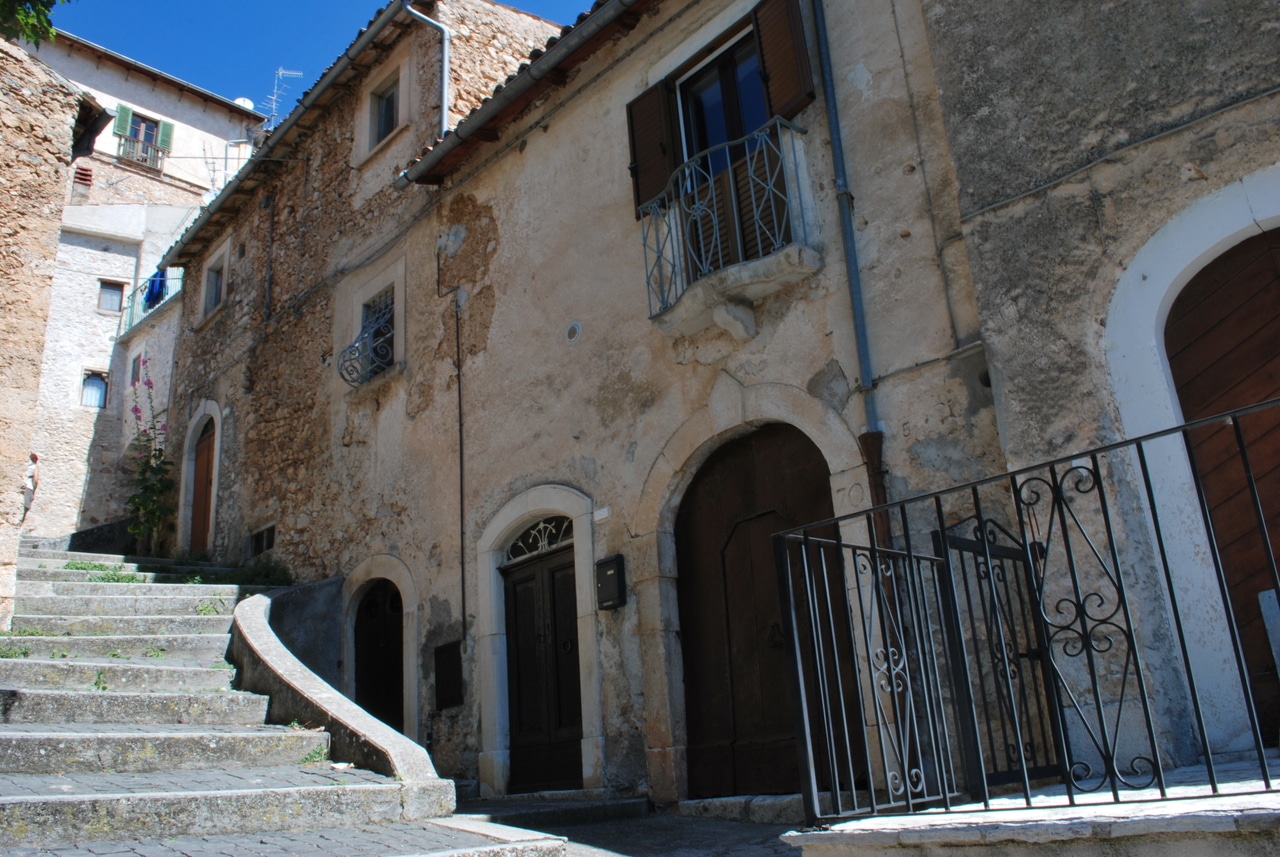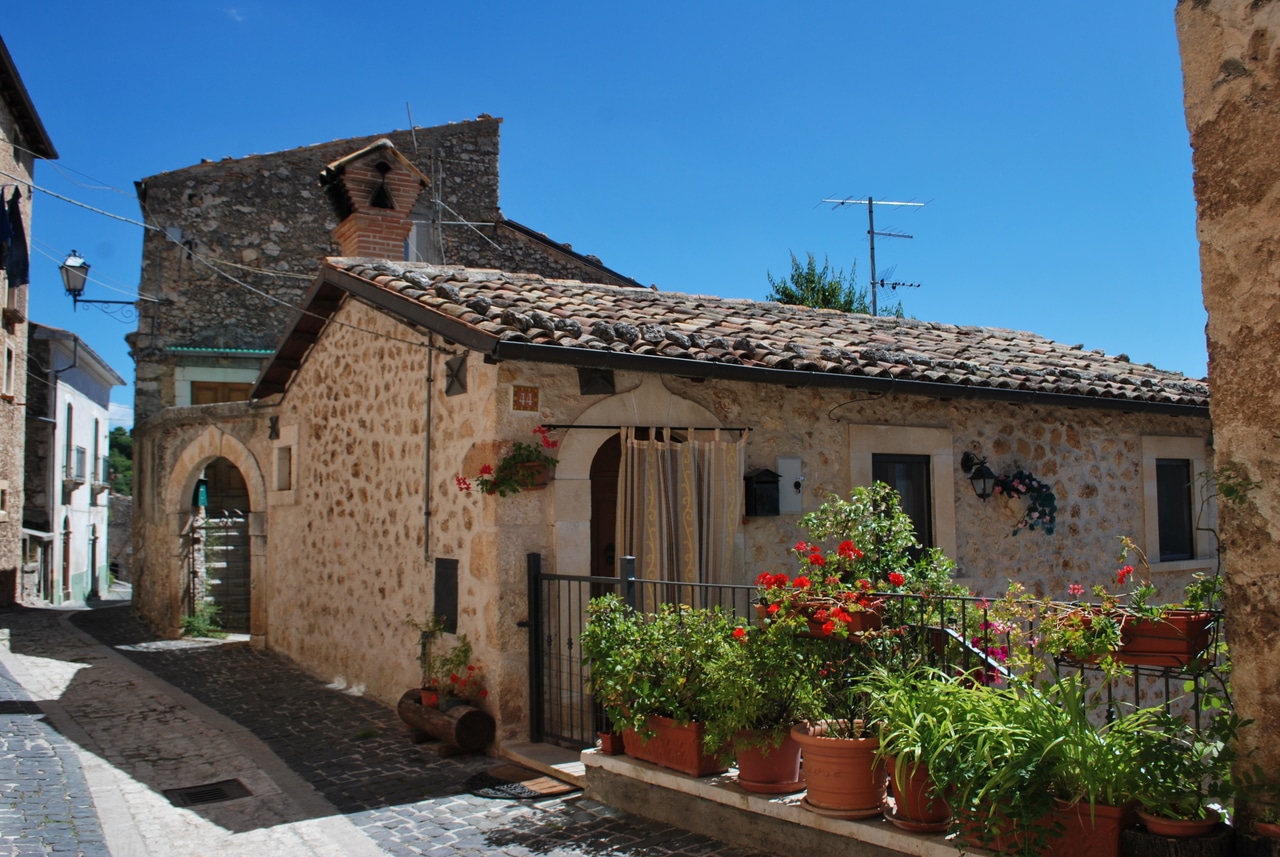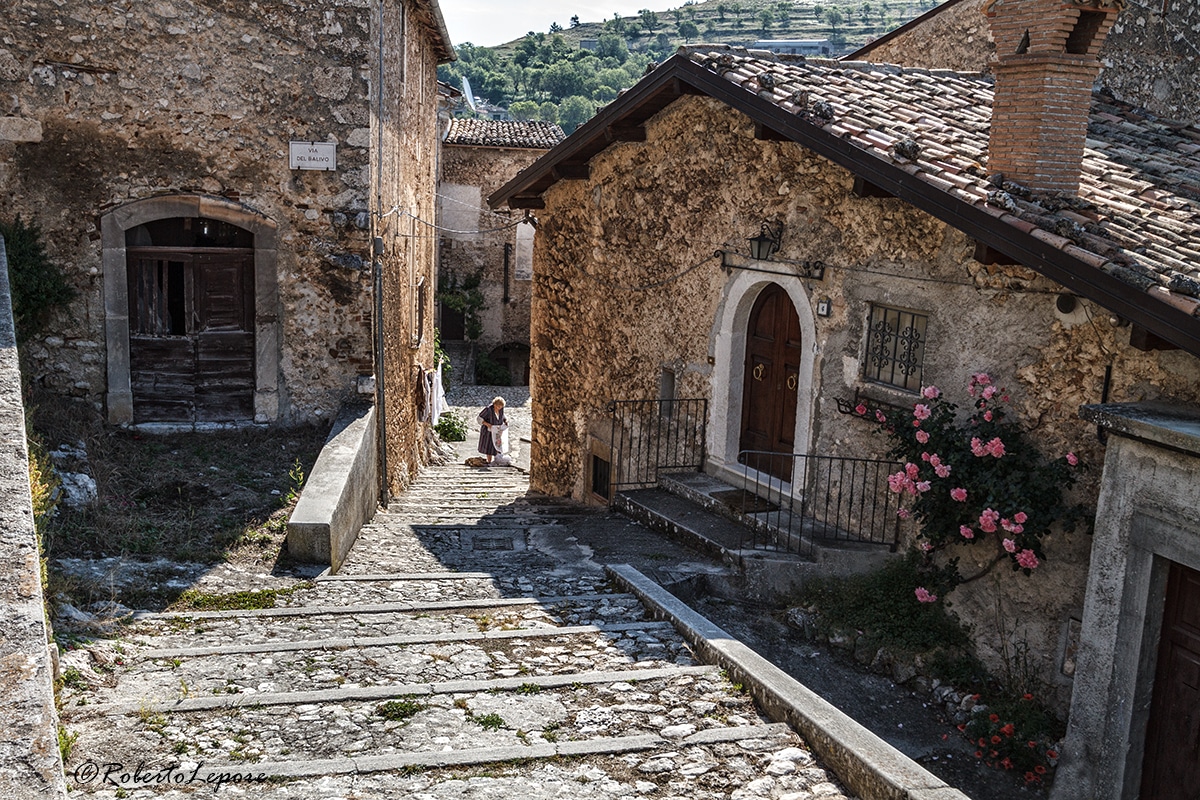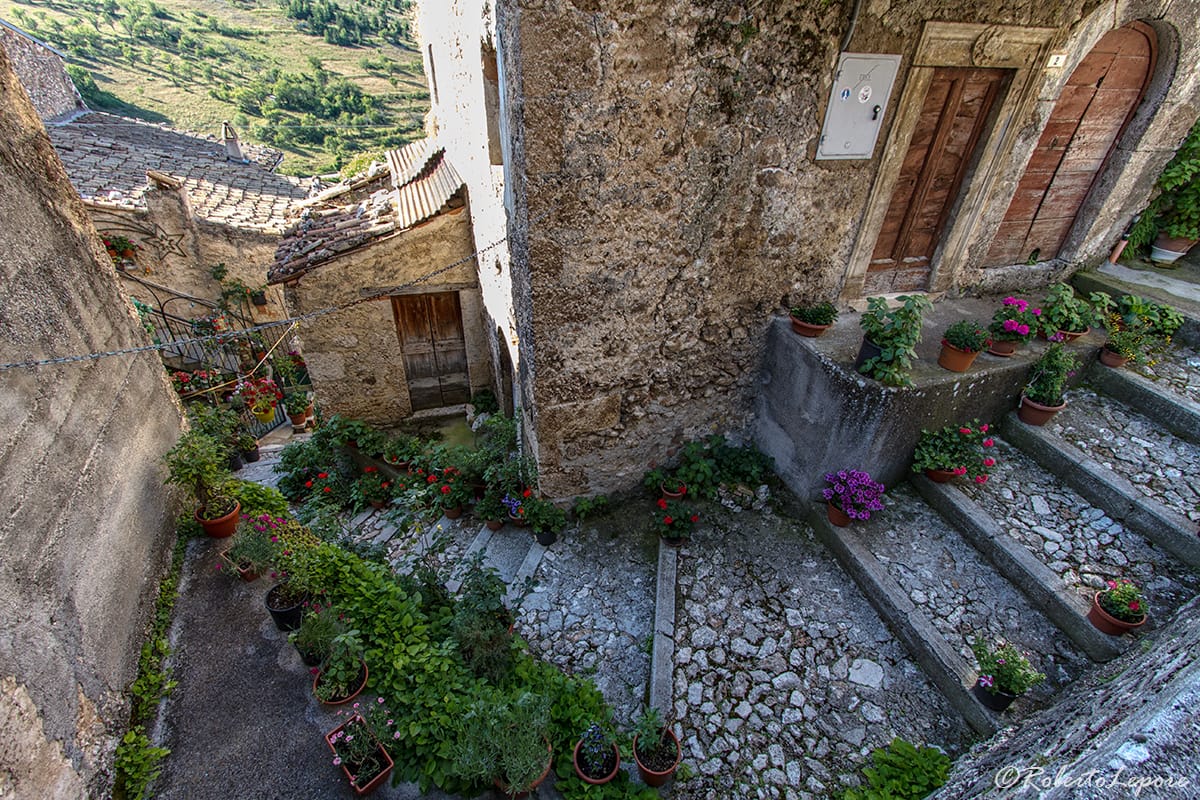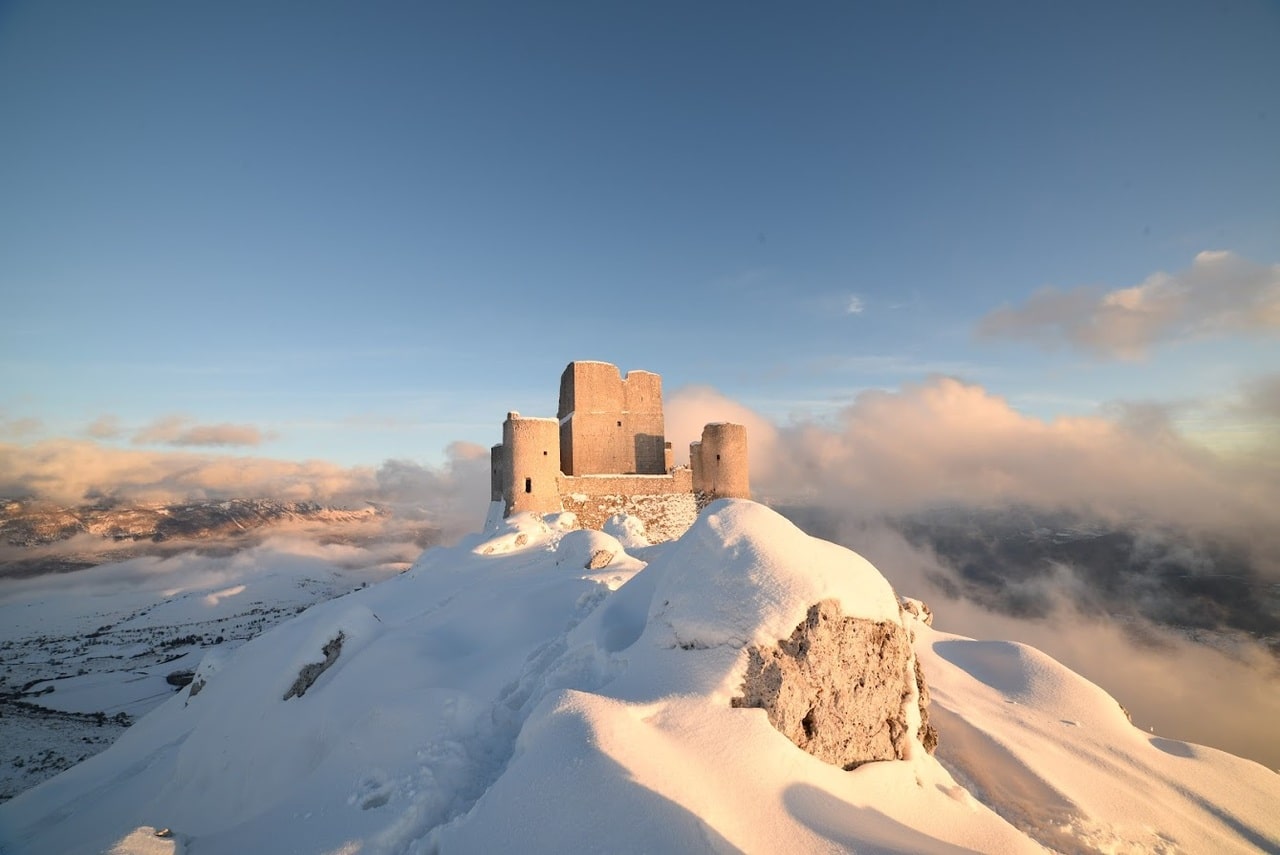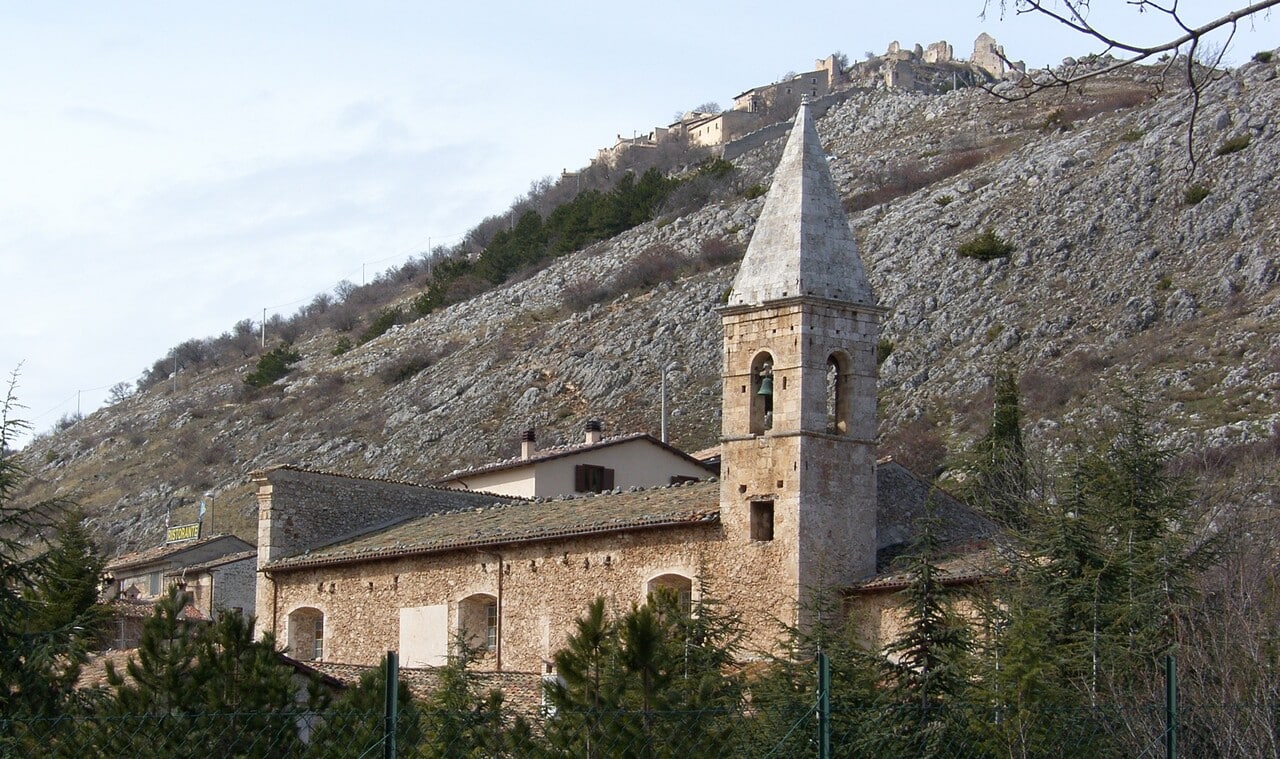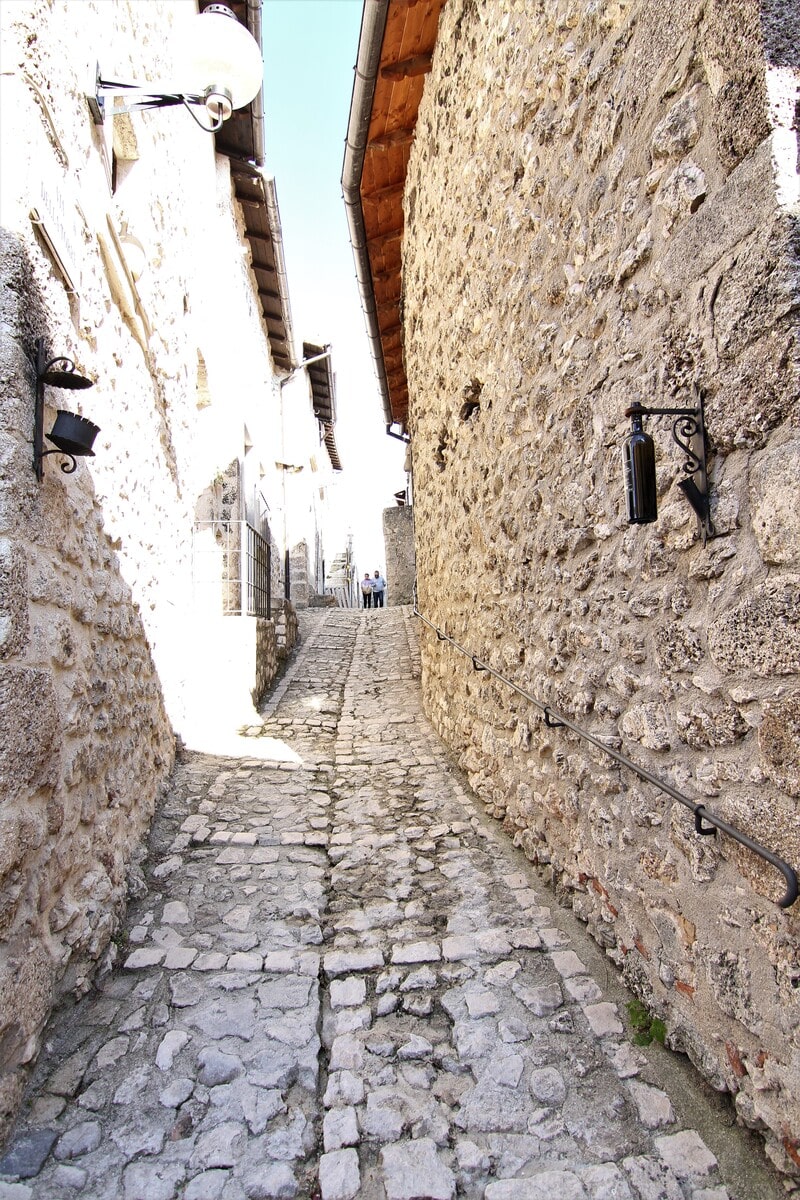Located on the border of Campo Imperatore, Rocca Calascio is a fascinating medieval castle that rises 1460 meters above sea level, the highest in the Apennines. This futuristic tower, overlooking the Gran Sasso d'Italia, offers breathtaking views that extend to Mount Sirente, Velino, the Plain of Navelli and the charming village of Calascio below, nestled at 1,200 meters above sea level.
Rocca Calascio, first mentioned in 1380, appears to have been built around the year 1000 as an isolated watchtower. Antonio Piccolomini is credited with the construction of the four towers and the surrounding wall around Rocca Calascio in 1480, as well as the reconstruction of much of the town, which was devastated by the earthquakes of 1348/1349 and 1461.
Next to the Rocca, you may find yourself spellbound in front of the Church of Santa Maria della Pietà, an emblem of devotion dating back to the late 1500s. The tower of Rocca Calascio, originally a military observation point, was known for its ability to communicate, with castles on the Adriatic coast through optical links, by means of perhaps flashlights at night and mirrors during daylight hours.
The apogee of Rocca Calascio coincides with the establishment of the "Dogana della mena delle pecore in Puglia" during Aragonese rule. Transhumant sheep-farming assumed a crucial role in local development, increasing the prosperity of the villages of the Baronia, which owned more than 90,000 sheep and supplied valuable "carapellese wool" to cities such as L'Aquila and Florence.
The 1703 earthquake led to the demolition of the castle and village of Rocca Calascio, leaving the houses in the lower part of the settlement half-abandoned and prompting many inhabitants to move to Calascio. Since then, the place has undergone a gradual demographic decline. Today, Rocca Calascio is known for its film sets, including "Lady Hawke" and "Amici Miei Atto Secondo."
Calascio, which dates back to the early Middle Ages, is a town rich in history and culture. Nestled in the Gran Sasso mountain range and the Campo Imperatore plateau, this place where stone reigns supreme, flaunts magnificent churches such as St. Nicholas of Bari, Santa Maria delle Grazie and Sant'Antonio Abate, witnesses to the prosperous past associated with the wool trade.
Among the striking aspects of Calascio is the octagonal chapel dedicated to Our Lady of Mercy from 1451, located near the fortress. In recent years, the revival of this area has seen the renovation of ancient buildings to accommodate tourists and history buffs during summer vacations and weekends.


